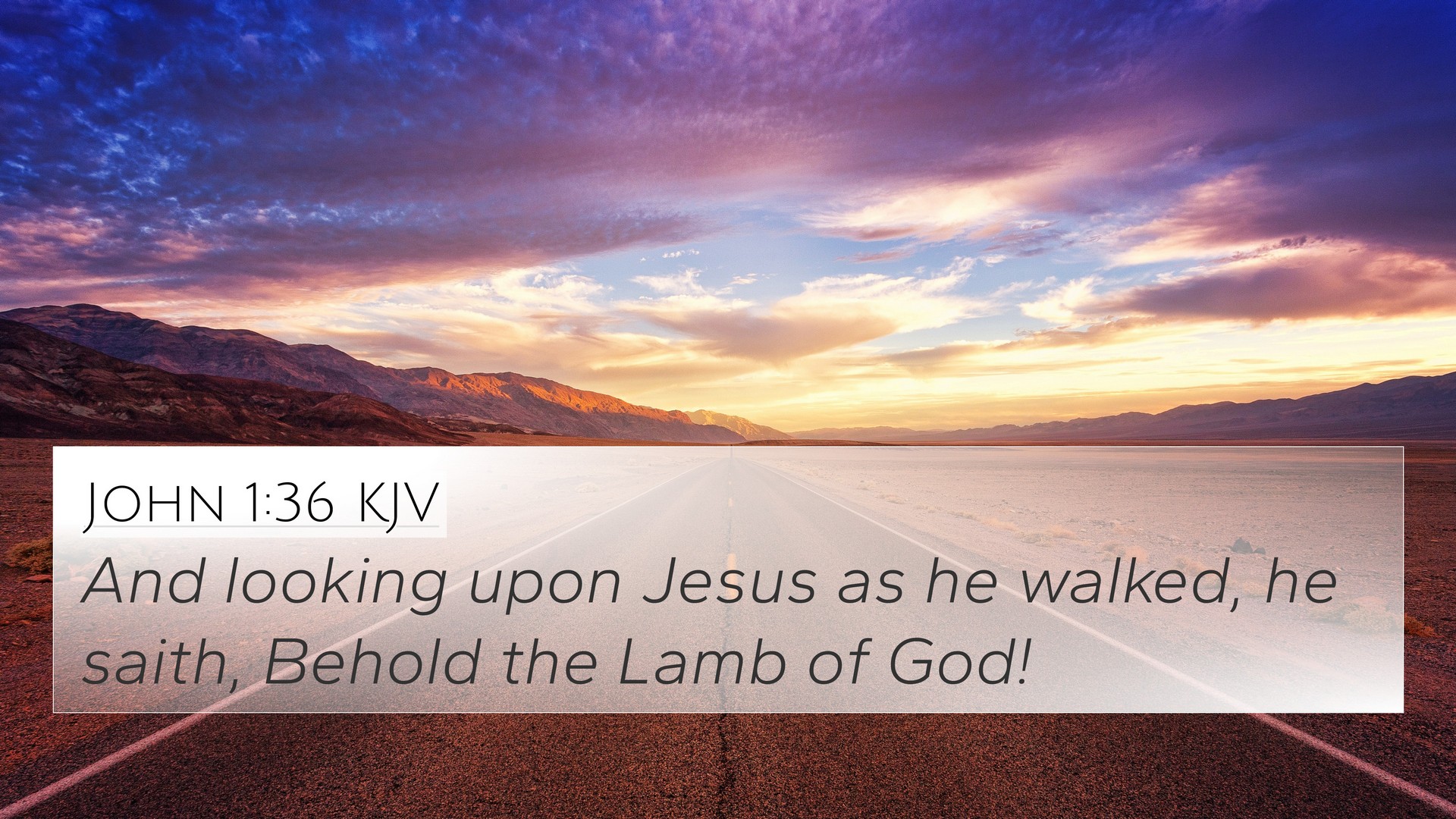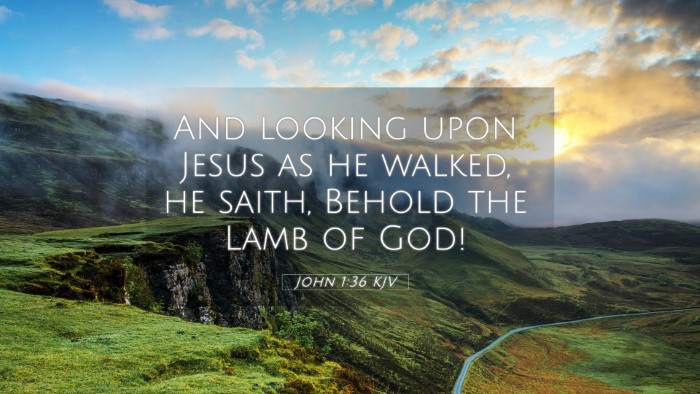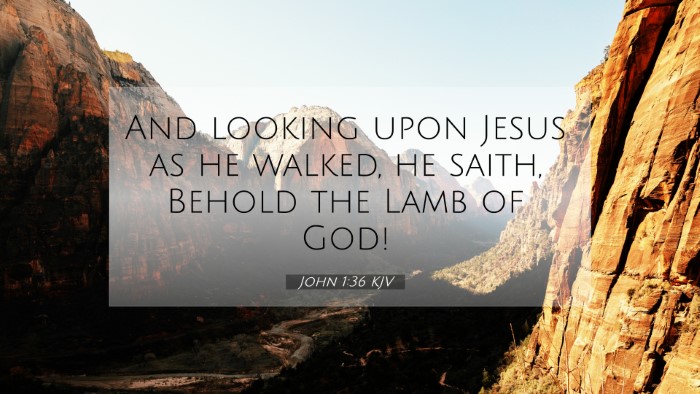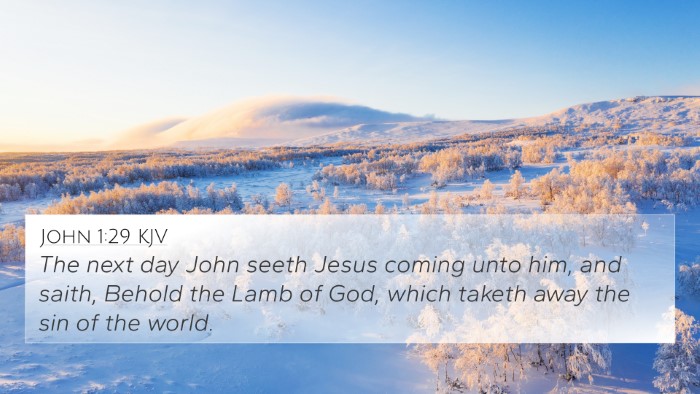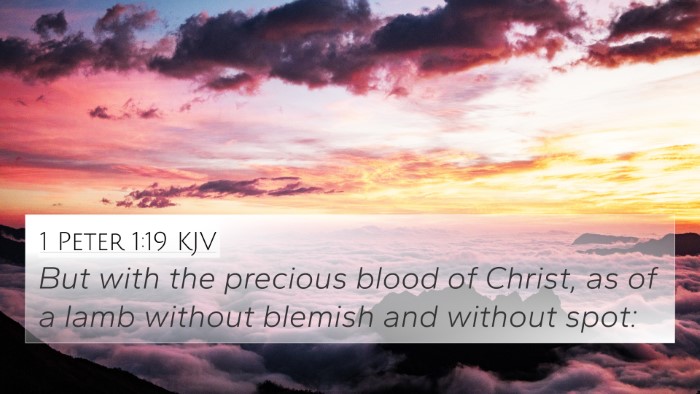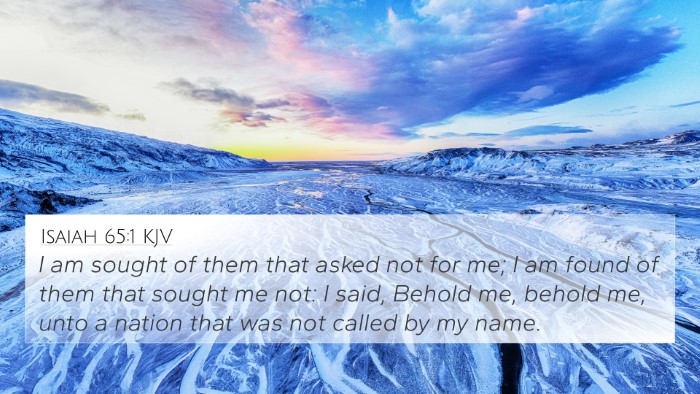Understanding John 1:36
Verse: John 1:36 - "And looking upon Jesus as he walked, he saith, Behold the Lamb of God!"
This verse serves as a pivotal moment in the Gospel of John, showcasing the recognition of Jesus' divine role. Let's explore its meaning through the insights from renowned public domain commentaries.
Interpretation Highlights
From Matthew Henry's Commentary
Henry asserts that John the Baptist, upon seeing Jesus, recognizes Him as "the Lamb of God." This signifies the fulfillment of the sacrificial system of the Old Testament, where lambs were offered for sin. John introduces Jesus to his followers, emphasizing His mission to take away the sins of the world.
Insights from Albert Barnes
Barnes elaborates on the implications of calling Jesus the "Lamb of God." He connects this title to the Passover lamb, which was sacrificed for the liberation of the Israelites, foreshadowing Jesus's ultimate sacrifice for humanity's sins. Barnes emphasizes the importance of recognizing Jesus' identity and His purpose in salvation.
Adam Clarke's Commentary
Clarke presents a theological perspective, explaining that the term "Lamb of God" conveys not only innocence and purity but also indicates the sacrificial nature of Jesus' mission. He highlights the significance of recognizing Jesus as the one appointed by God to bear the iniquity of all. Clarke emphasizes the invitation to all believers to witness and acknowledge this profound truth.
Bible Verse Cross-References
John 1:36 connects to several other scripture passages, illustrating a broader biblical narrative and enhancing understanding.
- Genesis 22:7-8 - Abraham's sacrifice of Isaac foreshadows God's sacrifice of His Son.
- Isaiah 53:7 - The prophecy of the suffering servant who would be led to slaughter.
- John 1:29 - John the Baptist repeats his declaration of Jesus as the Lamb of God, providing continuity in the narrative.
- Revelation 5:6 - The Lamb is depicted as standing victorious in heaven, symbolizing His triumph over sin and death.
- Exodus 12:3 - The instruction of selecting a lamb during Passover, highlighting its significance in redemptive history.
- 1 Peter 1:19 - Peter refers to Jesus as a lamb without blemish, reinforcing His purity and sacrificial role.
- Hebrews 9:12 - Illustrates Jesus entering the Holy Place with His own blood for eternal redemption.
Thematic Bible Verse Connections
Several themes emerge from John 1:36 and its cross-references, showcasing inter-Biblical dialogue and deeper theological implications:
- Redemption: The Lamb motif emphasizes the need for sacrifice and atonement.
- Divine Identity: Recognizing Christ's divine nature and mission is central to understanding the Gospel.
- Fulfillment of Prophecy: The Lamb's role is rooted in Old Testament prophecies, linking the Testaments.
- Innocence and Purity: Jesus' sinless life is portrayed through the symbolism of the lamb.
- Victory Over Death: The depiction of the Lamb in Revelation emphasizes the victory of Christ in the eschatological narrative.
Conclusion
In conclusion, John 1:36 encapsulates profound themes of sacrifice, recognition, and redemption. Through various scriptural cross-references, we see a tapestry of connections that affirm Jesus' divine identity as the Lamb of God. Understanding this verse in light of other biblical texts deepens our appreciation for the overarching narrative of salvation history.
Cross-Referencing in Bible Study
For those engaging in Devotional studies or sermon preparation, utilizing tools for Bible cross-referencing, like a Bible concordance or cross-reference guide, can enrich your exploration of scripture and enhance your understanding of connections between Bible verses.
By learning how to find and use cross-references effectively, one can uncover the wealth of inter-Biblical dialogue that brings clarity to individual verses and themes. Engaging with comparative Bible verse analysis and comprehensive resources enables deeper spiritual insights and a more profound connection with God’s Word.
